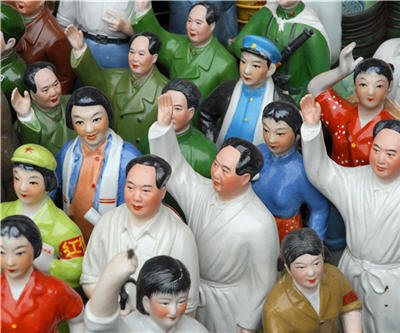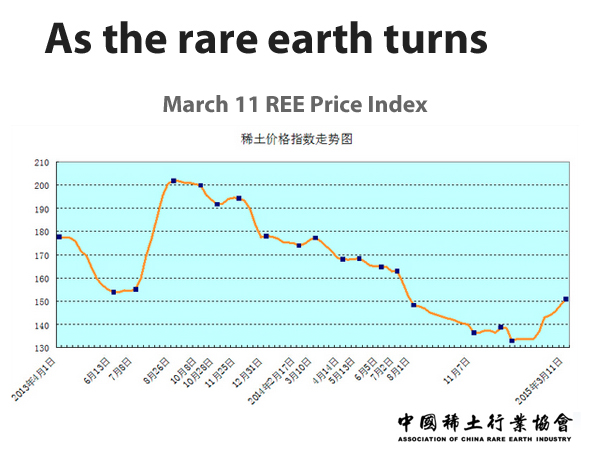
Hands up who wants higher rare earth prices
China produces nearly 90% of the world’s rare earths and its downstream industry consumes 70% of the 17 elements used in a variety of hi-tech industries including renewable energy, medical devices and defence.
Customs data show export volumes grew 27.3% in 2014 to 28,000 tonnes but the average export price of REE products plummeted to only 83,000 yuan ($13,000) per tonne. That’s a decrease of 47.8% from the year before and the third year in a row of sharp declines.
Following a World Trade Organization ruling, China is abolishing its decade-old export quota system for rare earths and is due to lift export tariffs of 20%-plus in May.
This liberalization should translate into further price declines, but Beijing has found other ways to tighten its grip on the industry.
The country is consolidating the industry under six large organizations led by the newly-named China North Rare Earth Group. The Inner Mongolia-based company operates the Bayan Obo iron ore mine and before the 2010 price surge after Beijing reduced export quotes, produced half the world’s REEs as a by-product.
Apart from combining mine output China North Rare Earth and the five groups are being vertically integrated to help modernize the country’s mostly low-tech rare earth separation and refining businesses.
Long the scourge of the industry, China is also intensifying efforts to shut down small-scale illegal REE mining and is enforcing strict new environmental policies as part of its broader war on pollution.
Details are still sketchy, but the export quota system could be replaced by production control licences based on adherence to environmental standards (so-called “green permits”) while export tariffs could make way for a value added tax and export certificates.

China’s State Bureau of Material Reserve is also embarking on a new round of REE stockpiling, while the Baotou Rare Earth Products Exchange launched in March should encourage private sector stockpiling a la Fanya Metal Exchange.
These measures are pushing up the cost of production which is already being reflected in the price.
The Association of China Rare Earth Industry price index (a rolling 20-day average of REE prices across the industry) this week racked up gains of 13% since the end of last year.
Some light REEs including the work horses of the industry cerium and lanthumum continue to fall while terbium and dysprosium have soared recently so it’s not a broad-based rally just yet.
Neither is it a return to he crazy days of 2010 – 2011 by any stretch, nor the mid-2013 rally (which turned out to be a dead cat bounce). But a turnaround nonetheless.
The pric e surge at the start of the decade resulted in widespread demand destruction and substitution causing long term damage to everyone from rare earth explorers to magnet manufacturers.
A steady – if unspectacular – build-up in price may be just what the industry needs.
Image of Dongtai Lu antique market figurines in Shanghai, 2007 by claudio zaccherini / Shutterstock.com